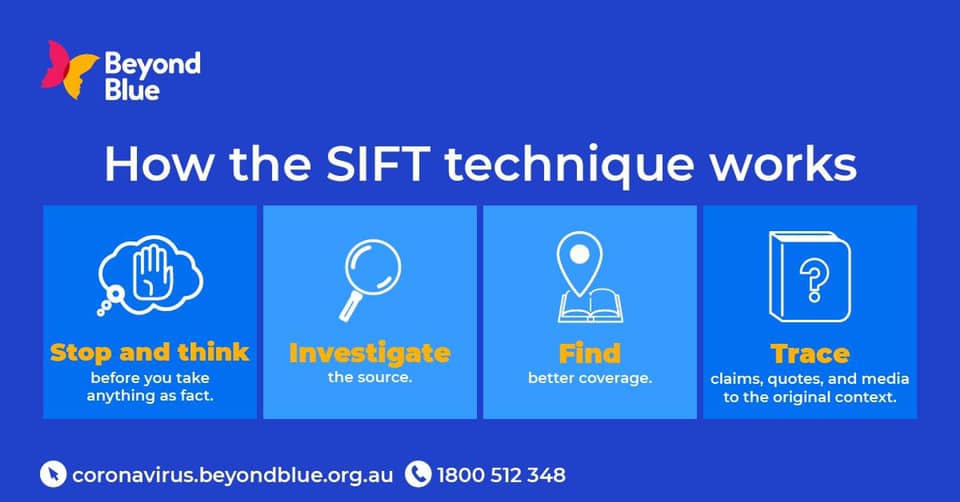News Overload? Try SIFT

Everywhere we look - in newspaper, tv, radio, social feeds - we're absorbing news and information.
In your own household, you might have news on in the background as you get ready for work. Perhaps it’s on the radio as you drop your children at school. Or maybe you’re checking your daily news social feed - morning, noon and night!
The 24/7 information drive is well and truly on.
Now more than ever it's important that we stay well informed. But consuming too much news - particularly about COVID-19 - can be bad for your health, particularly if that news is fake, misleading or ill-informed. It’s an information overload.
How can you help you and your family cut through the noise?
Mike Caulfield of Washington State University created the SIFT technique to help us sort out the fact from the fiction.
According to Beyond Blue, "Gaining a sense of control over what you consume and limiting your exposure to unhelpful and/or untrue information may help support your mental health during this challenging time."
It’s also equally important to help children understand, make sense or question the information being shared with them – especially if your child is receiving news from platforms like Tik Tok or Snapchat.
How does the SIFT technique work?

STOP and think before you take anything as fact. When you see something on your news feed, take a step back. It takes 30 seconds to process your reaction. Do you have all the information you need to understand what is in front of you?
INVESTIGATE the source - who is providing this information? Is the person a certified expert? Is it a legitimate source?
FIND better coverage. Cross-check the information with trusted sources.
TRACE claims, quotes, and media to the original context. In other words, click back to find the original source of information.
Central Coast Grammar School is a registered Be You community. Discover more about the wellbeing programs and initiatives at CCGS.




